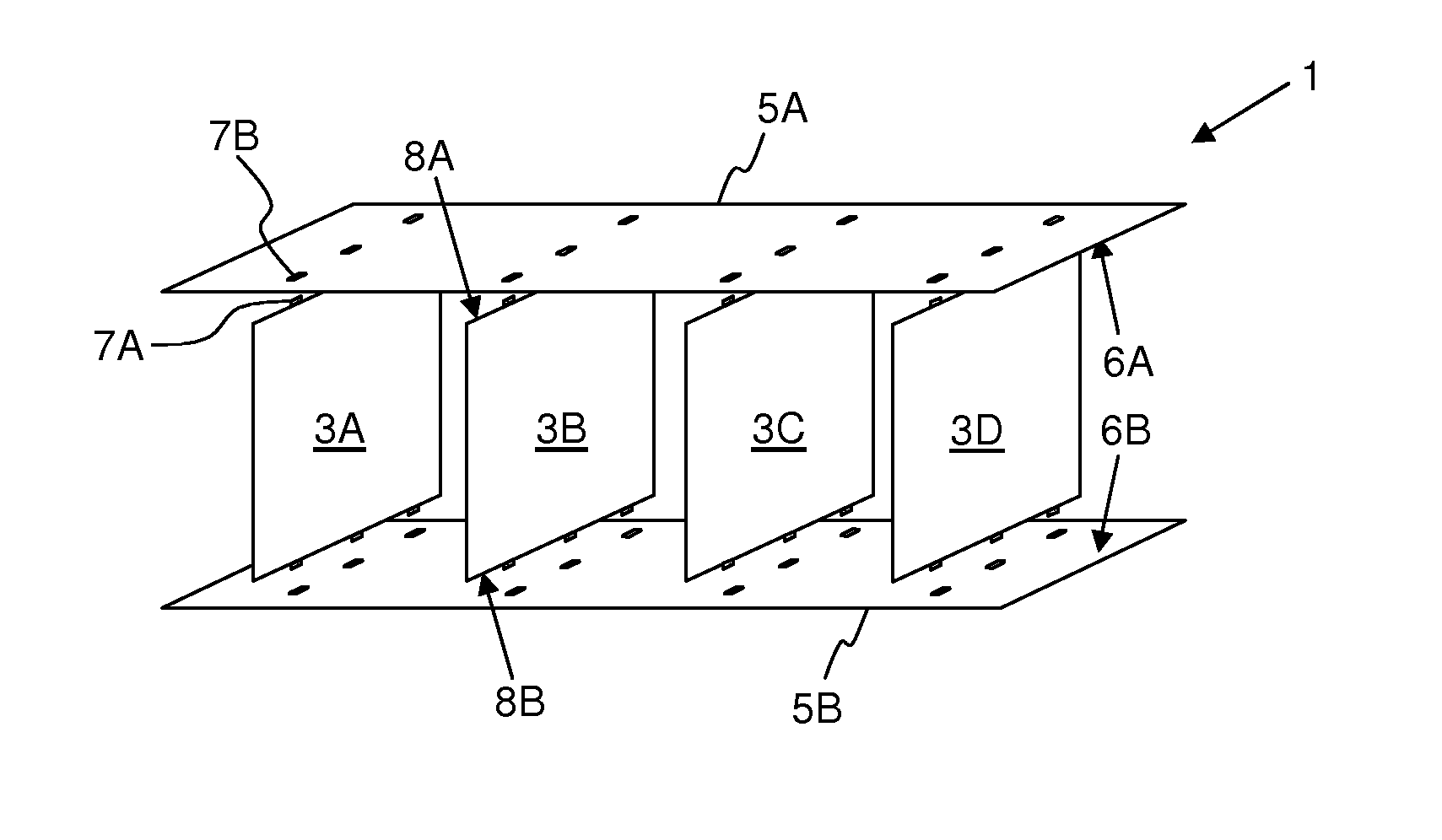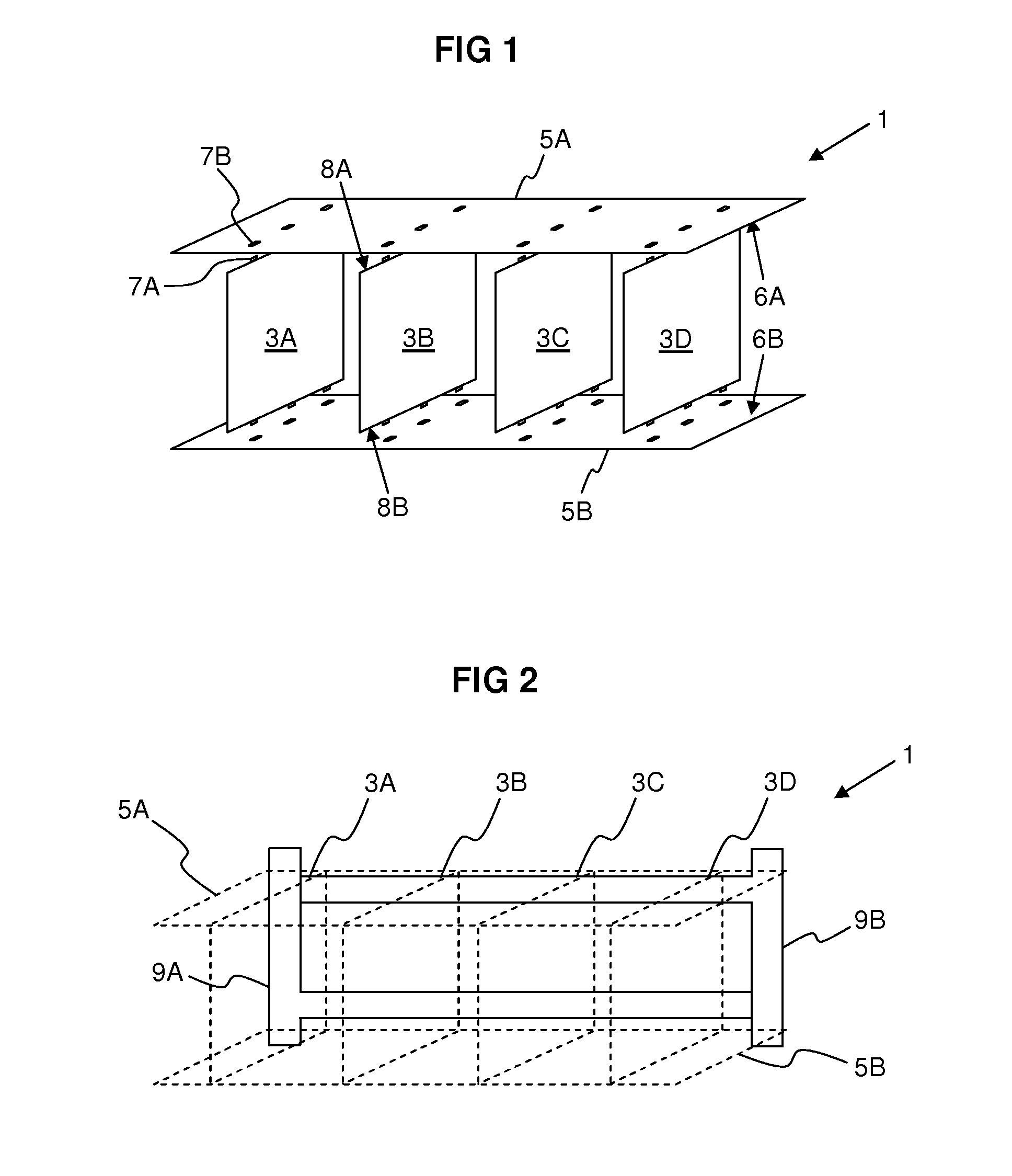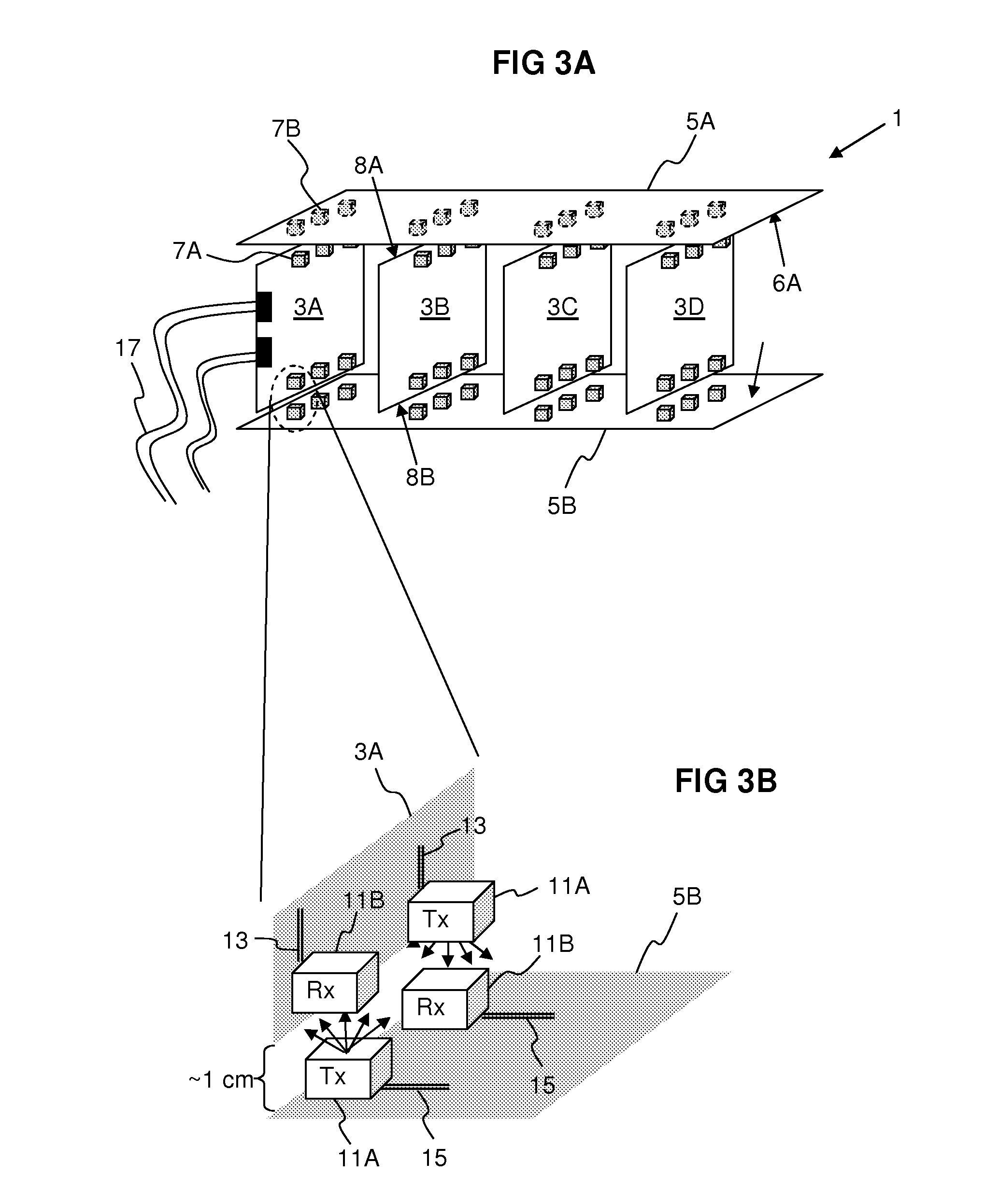System card architecture for switching device
a switching device and system card technology, applied in the construction details of electrical apparatus, data switching networks, high-level techniques, etc., can solve the problems of imposing a serious overall space problem, increasing system size, cost and complexity, and system in part limited by backplane capacity, so as to reduce the overall signal travel distance, reduce the cost, and the effect of small siz
- Summary
- Abstract
- Description
- Claims
- Application Information
AI Technical Summary
Benefits of technology
Problems solved by technology
Method used
Image
Examples
Embodiment Construction
[0030]In the following description, for purposes of explanation and not limitation, specific details are set forth, such as particular network switch components and configurations, in order to provide a thorough understanding of the present invention. However, it will be apparent to one skilled in the art that the present invention may be practiced in other embodiments that depart from these specific details. In other instances, detailed descriptions of well-known network switch components and configurations are omitted so as to not obscure the description of the present invention with unnecessary detail. So for example will the electronic / optoelectronic details as well as the mechanical details of the network switching device according to the invention be much simplified for illustrative purposes.
[0031]FIG. 1 schematically illustrates a network switching device 1 according to the invention. A plurality of line cards 3A-D facing each other with their flat sides are aligned in parall...
PUM
 Login to View More
Login to View More Abstract
Description
Claims
Application Information
 Login to View More
Login to View More - R&D
- Intellectual Property
- Life Sciences
- Materials
- Tech Scout
- Unparalleled Data Quality
- Higher Quality Content
- 60% Fewer Hallucinations
Browse by: Latest US Patents, China's latest patents, Technical Efficacy Thesaurus, Application Domain, Technology Topic, Popular Technical Reports.
© 2025 PatSnap. All rights reserved.Legal|Privacy policy|Modern Slavery Act Transparency Statement|Sitemap|About US| Contact US: help@patsnap.com



